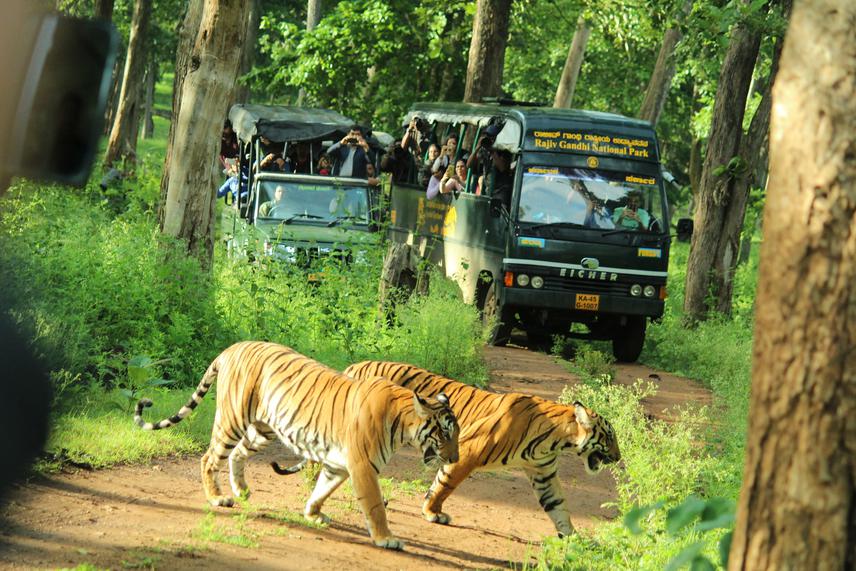Dincy Mariyam
This project aims to explore the possibility of regulating nature-based tourism in India by offsetting the burden on highly visited protected areas (PAs) with non-PA centric tourism that engages local communities. We will conduct semi-structured interviews with tourists who visit India’s top eight PAs to a) identify their nature-viewing preferences b) examine their interests in community-run tourism, and c) assess how various traveler profiles influence their willingness to pay. The results from this study will ultimately help us in recommending tourism management strategies to balance revenue generation while maintaining ecological integrity and help redistribute revenue generation to lesser known PAs and other tourism stakeholders.

Tourism in terrestrial protected areas (PAs) is increasing in developing economies such as India. It is time to consider alternate management practices with many of them reaching their carrying capacities. For developing novel tourism models, it is important to incorporate the attitudes and expectations of the stakeholders involved in tourism.
The project has two parts. The first part examines the nature-viewing preferences of tourists visiting eight popular PAs in India through in-person interviews. The project will also examine what socioeconomic, demographic and geographic factors drive preferences and if these inferences can be incorporated into tourism models. The second part of the project examines tourist’s interest in community-run tourism and their willingness to pay for such experiences.
The chosen project sites are highly visited PAs in India namely, Kaziranga, Sunderbans, Corbett, Ranthambore, Kanha, Bandipur, Anamalai, and Periyar. These PAs are characterized by having received more than 100,000 visitors annually. These PAs, which encompass various ecosystems across India, are also given an additional conservation status as “Tiger Reserves,” which garners higher protection and greater federal funding. The Sundarbans and Kaziranga are located in the eastern part of India, Corbett and Ranthambore are in northern and western India, Periyar and Anamalai fall in southern India, while Kanha is located in central India. The range of varied ecological, geographic, socio-political and administrative contexts represented by these eight PAs provides us with an opportunity to get a wider perspective on nature-based tourism across the country.
The project is expected to bring out the nuances in tourist expectations and interest in alternate forms of tourism. Such knowledge will aid in educating and creating awareness for broadening the interests of the tourists who often have narrow-viewing preferences. This can be used to inform plans for interpretation/nature centres. The management plans can have different tourism packages designed depending on the traveler profile. The results derived from the project will enable park management and policy makers in developing or improving existing tourist management plans for PAs, provide guidance for attracting tourists to less popular PAs, and explore the basis for increasing local community engagement in tourism.